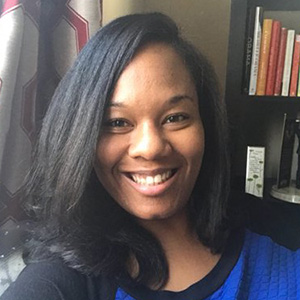
The conversation, both practical and theoretical, surrounding culture, diversity, and equity in evaluation has increased in recent years. As many STEM education programs aim to broaden participation of women, ethnic minority groups, and persons with disabilities, attention to culture, diversity, and equity is paramount. In two blog posts, I will provide a brief overview of four strategies to meaningfully and respectfully engage with these important topics. In this first blog, I will focus on strategies that are helpful in learning more about these issues but that are theoretical and not directly related to evaluation practice. I will also help you learn more about these issues. I should note that I purposely have included a number of citations so that you may read further about these topics.
Strategy one: Recognize social inquiry is a cultural product
Social science knowledge of minority populations, constructed with narrow worldviews, has demeaned characteristics, distorted interpretations of conditions and potential, and remained limited in its capacity to inform efforts to improve the life chances of historically disadvantaged populations (Ladson-Billings, 2000). Begin by educating yourself about the role communicentric bias—the tendency to make one’s own community, often the majority class, the center of conceptual frames that constrains all thought (Gordon, Miller, & Rollock, 1990)—and individual, institutional, societal, and civilizational racism play in education and the social sciences (Scheurich & Young, 2002). Seek to understand the culture, context, historical perspectives, power, oppressions, and privilege in each new context (Greene, 2005; Pon, 2009).
To do this, you can read and discuss books, articles, and chapters related to epistemologies— theories of knowledge—of difference, racialized discourses, and critiques about the nature of social inquiry. Some excellent examples include Stamped from the Beginning by Ibram X. Kendi, The Shape of the River by William G. Bowen and Derek Bok, and Race Matters by Cornel West. Each of these books is illuminating and a must-read as you begin or continue your journey to better understand race and privilege in America. Perhaps start a book club so that you can process these ideas with colleagues and friends.
Strategy two: Locate your own values, prejudices, and identities
The lens through which we view the world influences all evaluation processes, from design to implementation and interpretations (Milner, 2007; Symonette, 2015). In order to think critically about issues of culture, power, equity, class, race, and diversity, evaluators should understand their own personal and cultural values (Symonette, 2004). As Peshkin (1988) has noted, the practice of locating oneself can result in a better understanding of one’s own subjectivities. In my own work, I always attempt to acknowledge the role my education, gender, class, and ethnicity will play in my work.
To do this, you can reflect on your own educational background, personal identities, experiences, values, prejudices, predispositions, beliefs, and intuition. Focus on your own social identity, the identities of others, whether you belong to any groups with power and privilege, and how your educational background and identities shape your beliefs, role as an evaluator, and experiences. To unearth some of the more underlying values, you might consider participating in a privilege walk exercise and reflecting on your responses to current events.
These two strategies are just the beginning. In my second blog post, I will focus on engaging with these topics informally and formally within your evaluation practice.

Except where noted, all content on this website is licensed under a Creative Commons Attribution-NonCommercial-ShareAlike 4.0 International License.





 EvaluATE is supported by the National Science Foundation under grant numbers 0802245, 1204683, 1600992, and 1841783. Any opinions, findings, and conclusions or recommendations expressed on this site are those of the authors and do not necessarily reflect the views of the National Science Foundation.
EvaluATE is supported by the National Science Foundation under grant numbers 0802245, 1204683, 1600992, and 1841783. Any opinions, findings, and conclusions or recommendations expressed on this site are those of the authors and do not necessarily reflect the views of the National Science Foundation.